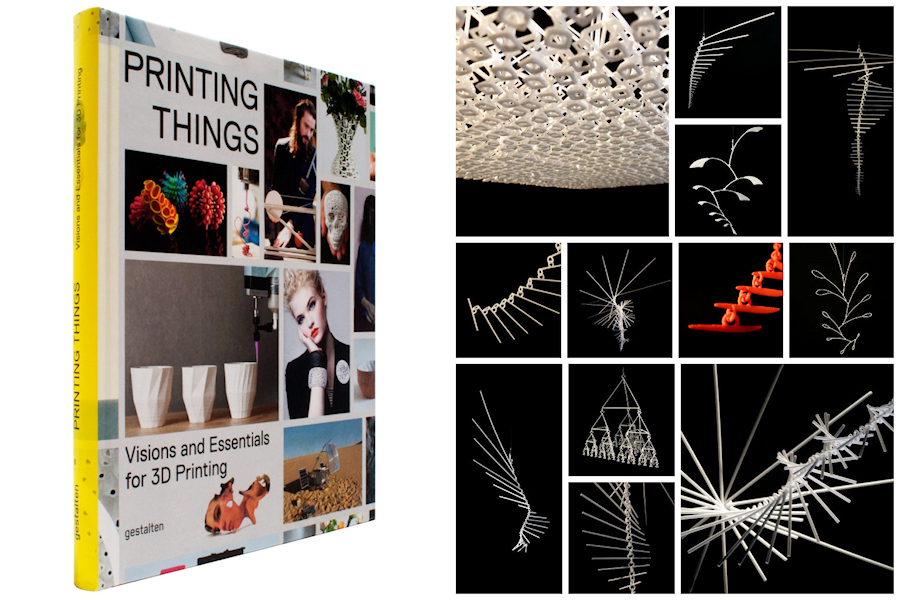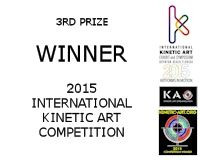3D Printed Mobiles in new book “Printing Things – Visions and Essentials for 3D Printing”
Our 3d printed mobiles are in a new book by publisher and creative agency Gestalten titled Printing Things – Visions and Essentials for 3D Printing. It’s an inspirational and understandable exploration of the creative potential of 3D printing that introduces outstanding projects, key experts, and the newest technologies.
From the Book:
Kinetic Structures, Virtually Balanced: The term “mobile” was first used in 1931 by Marcel Duchamp to describe the kinetic wire-frames made by Alexander Calder, whose iconic works later sparked an entire genre of sculpture. These works were created in situ, taking advantage of ambient air currents and finely calibrated equilibriums to generate large constructions, both dynamic and serene in their movements. In the years that followed, the art form became archetypal, but the advent of sophisticated design and engineering software has allowed for unprecedented methods of working in the medium. A collaboration arose between kinetic sculptor Marco Mahler and Henry Segerman, an assistant professor of mathematics, on the question of advanced modeling for the creation of rapid prototyped mobiles. Communicating exclusively via email, Skype and Twitter, the two were united by the shared interest in a mobile emerging fully assembled from a single print, the separate parts already interconnected. The precision of the printing technology allowed them to calibrate the balance to the micron (one one-thousandth of a millimeter), slightly modifying the thickness of certain elements to generate different bearing. They also experimented with scripted modeling in the Python programming language to increase the limits of intricacy, for instance with the 1365 pieces that make up the Quaternary Tree Mobile Level 6. Finally they uploaded their designs to Shapeways, transforming the mobile from a delicate one-off to a geometric code available for materialization on demand.
About the Book:
3D?printers will soon be found in more and more workshops, offices, and homes. With them, we will be able to print out small pieces of furniture, prototypes, replacement parts, and even a new toothbrush on-site at any time. Consequently, new production methods and business models are developing—along with a new visual language of multidimensional formal explorations. Today, 3D objects and complex forms can already be printed out that were previously impossible to achieve with traditional methods.
Printing Things is an inspirational and understandable exploration of the creative potential of 3D printing. The book not only introduces outstanding projects, key experts, and the newest technologies, but it also delves into the complex topics that these paradigm-shifting technologies bring up, such as how to handle copyrights and seamless manufacturing.
– Read the review on designboom –


